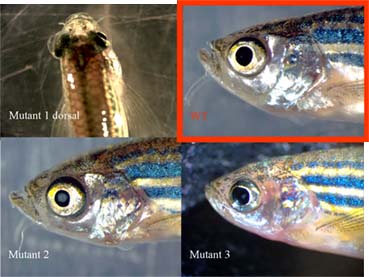 Mutagenesis screens provide an unbiased and genome-wide, large-scale approach for identifying novel genes or gene functions. The MPI EB (C. Nüsslein-Volhard) is hosting a screen of 6,000 mutagenized genomes to isolate mutations specifically afflicting organogenesis and tissue formation, using technology established in previous large-scale screens. This screen uses the Tübingen line as a genetic background whose suitability has been proven in previous projects. Screening will also be performed for adult phenotypes displaying altered formation or growth of adult structures, as to date very little is known about the genetic basis underlying these processes, as well as impaired wound healing and behavioral abnormalities.
Mutagenesis screens provide an unbiased and genome-wide, large-scale approach for identifying novel genes or gene functions. The MPI EB (C. Nüsslein-Volhard) is hosting a screen of 6,000 mutagenized genomes to isolate mutations specifically afflicting organogenesis and tissue formation, using technology established in previous large-scale screens. This screen uses the Tübingen line as a genetic background whose suitability has been proven in previous projects. Screening will also be performed for adult phenotypes displaying altered formation or growth of adult structures, as to date very little is known about the genetic basis underlying these processes, as well as impaired wound healing and behavioral abnormalities.
The Tübingen screen has been split in several phases. Each phase has a duration of 5 – 6 months and involves the screening of 1,500 – 2,500 families. This scheme allows for assays developed in the course of the project to be incorporated into later phases, resulting in more flexibility to maximize the scientific output of the workpackage.
In order to identify mutations with relevance for neurogenerative diseases in the dopaminergic system, like Parkinson's disease, a second screen of 1,000 mutagenized genomes will be carried out by U Freiburg in transgenic fish carrying green fluorescent protein (GFP) fusion proteins (generated in WP2). We anticipate a start of the screen in fall 2006.

